Standing on a sand spit of the purest white color, surrounded by incredibly turquoise sea, with a towering volcano in the background. Not with a group of tourists that got ferried here by a soulless package trip company. Adonara gets no more than 20 foreign tourists a year (!), so any package trip company here would bankrupt soon. It was just me and the fisherman who I persuaded to take me there. At the least developed end of the least touristy island, I realized that raw natural beauty hides behind every corner on this planet.
The Story – The ikat and the party for a dead man
In the previous post, I finally managed to rent a scooter on Adonara, finding a new friend in the process, and explored the White, Chocolate and Red beaches on the island.
As it was slowly getting too late, I walked from the Red Beach back to my scooter. On the way back to the main village, I took a wrong turn towards the coast and decided I can as well explore this area too. To my surprise, I soon entered into a tiny village of a few houses made of rough bricks. As it was off the main road, the villagers were not used to any kind of visitors, much less a bule (a foreigner) on a motorcycle.
Obviously, this meant I soon had a large following of local children screaming and shouting at me. As I was slowly riding past the houses, in each one I saw a local woman working on a yarn. When I had a closer look, I realized these women are making the ikat, a typical Indonesian fabric dyed with a special technique. One woman’s ikat particularly got my attention as I really liked the pattern, so I stopped and took a picture with her permission.
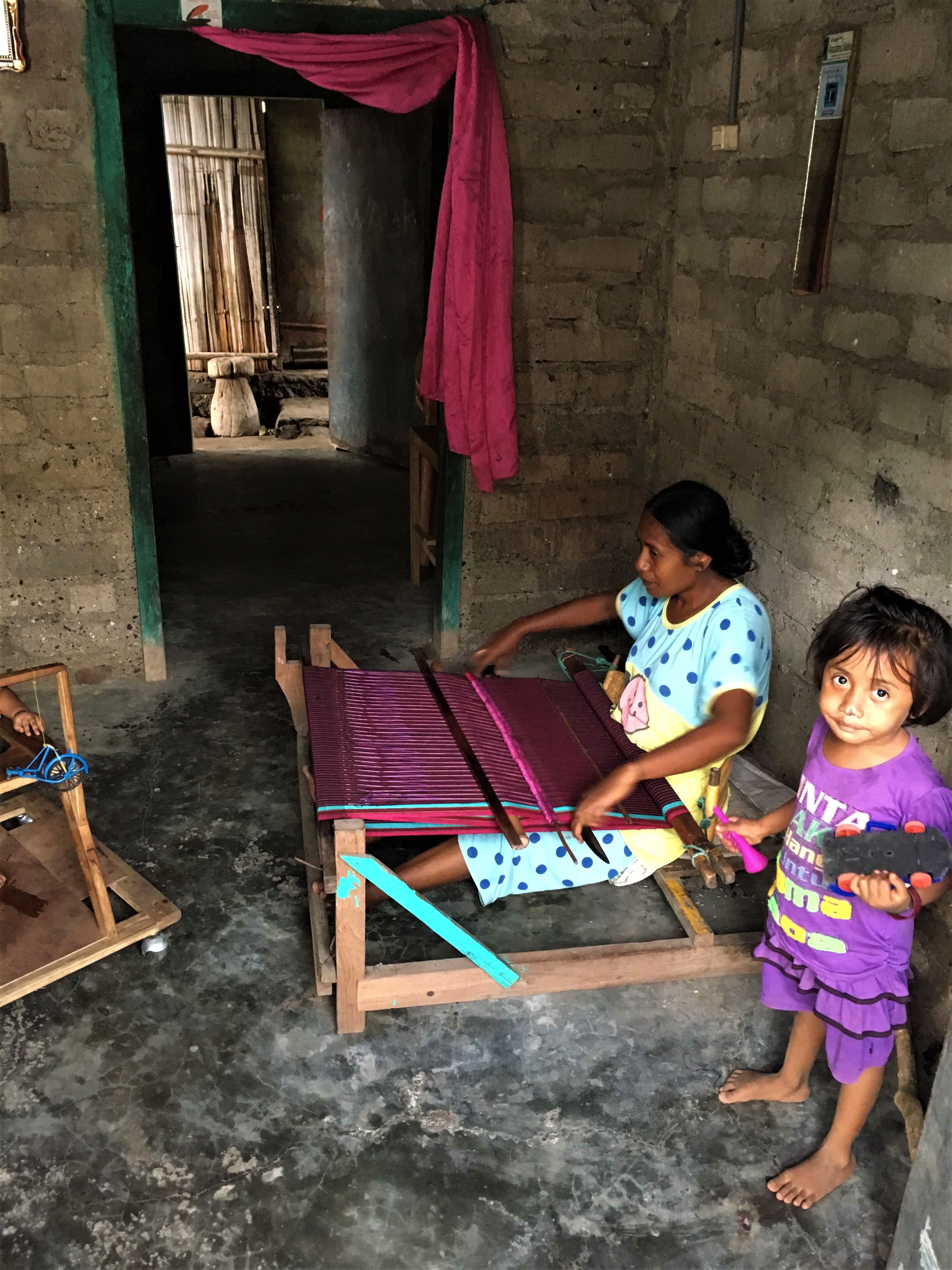
I am not a big buyer of presents and souvenirs, but this was a unique opportunity to get something completely authentic. Compare it to buying ‘local arts and crafts’ at a busy shop in Bali, which are overpriced and most likely shipped from somewhere else. The village looked like one big workshop where the women make traditional ikat and someone then comes and distributes it to the marketplaces.
The place turned out to be even more uncommercial as I expected. While in typical touristic places you need to fend off annoying shop owners offering you trinkets wherever you go, here the experience was quite the opposite. When I told her in Indonesian that I want to buy the ikat she is making, she just laughed and continued to work.
I did not want to give up so easily though. In the meantime, all the children from the village gathered around me. Some of them even spoke a little English. I explained to the smartest looking kid I am serious about paying them for the ikat. Off course, there was the obligatory taking of pictures with the kids 🙂 I am happy I did it, as it turned out to be a wonderful picture. For the record, the smart kid is the one doing the V sign with his fingers.

As evident, my presence created quite a big excitement in the village, and I was taken to the ‘main square’ (four houses opposite each other). There, another woman brought me her ikat and from her gesticulation I understood she was asking me how much I am willing to pay for that.
However, I had my eyes set on that one particular ikat that got my attention, so we all moved in front of the house on the picture. Now, the husband of this skilled ikat-maker got attracted by the big commotion and probably understood there is business to be made. We agreed on a price (I think it was 150 or 250 thousand rupiah – around 17 EUR) and made the deal. Suddenly, when the other women saw I am giving actual money for the ikat, they all swarmed around me and tried to sell me their products. Even though they offered it to me for half the price I just paid, I already had the one I wanted. Satisfied with getting an authentically made local craft, I rode back to Waiwerang. I still have that ikat in my home btw.
On the way back, just outside Waiwerang, I found a place where they made the tastiest satay (meat on a stick in peanut sauce). If you are ever there, you must try it.
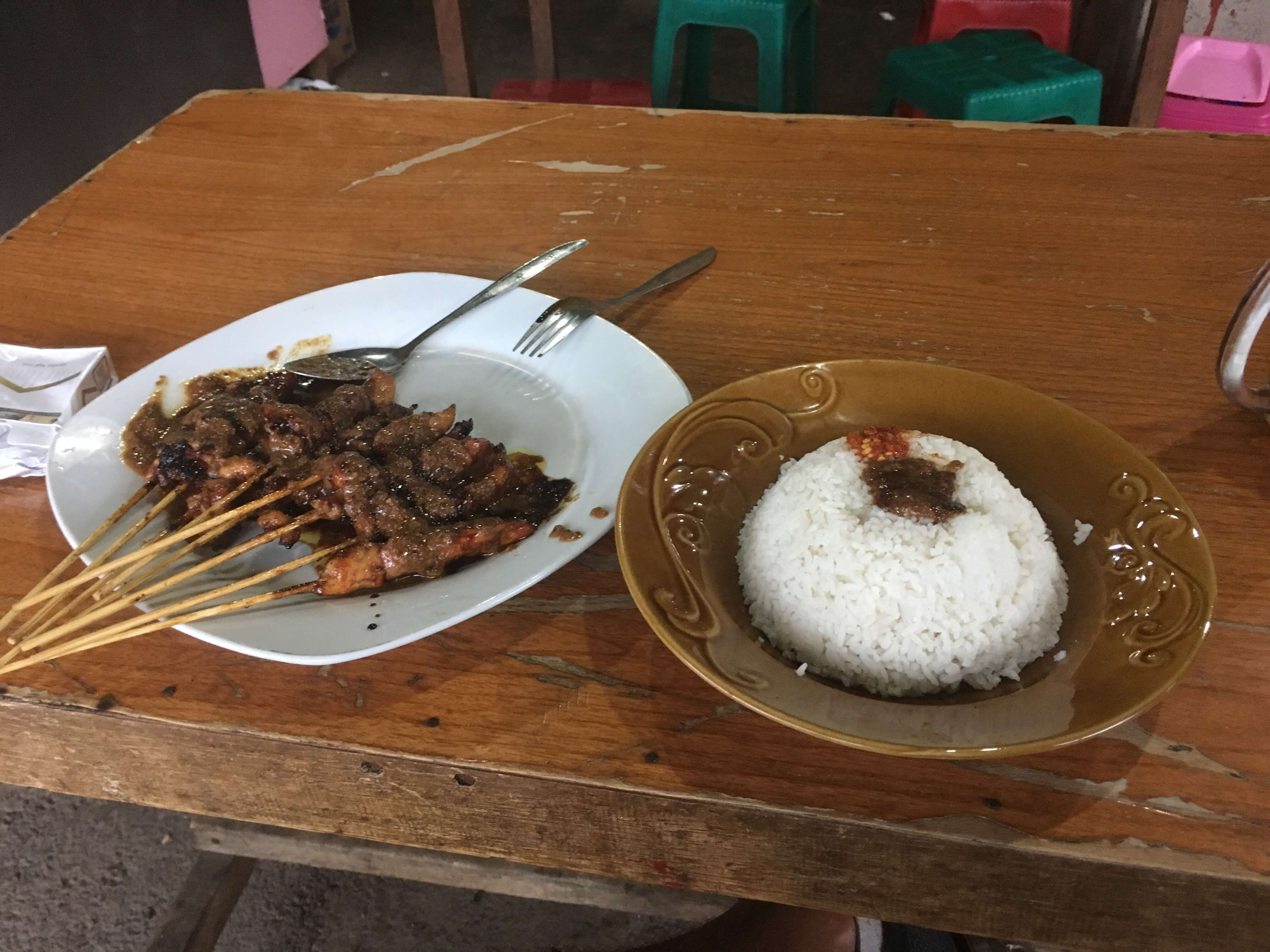
After I had a small nap in the evening, my new friend Arman, the shop owner, picked me up for the Muslim party I got invited previously (see Adonara Part 1). As he took me to there on his scooter, he said: “I forgot to tell you, this is actually a party for a dead man” 🙂 You can imagine my surprise that I was actually going to attend a Muslim Adonara-style burial-feast. After seeing I got a bit hesitant, he added something along the lines of: “Do not worry, he was already very old so it is not going to be a sad event”. You can learn a new perspective on life when getting to know distant cultures.
The party for a dead man was a strictly male event, with the girls staying in another room. There were around 30-40 men, some of them dressed in traditional Muslim wear, some wearing more casual clothing. There was much delicious food prepared, including a freshly killed goat, as is the custom in Indonesia for special occasions. We all got our plates filled and sat on rattan carpets inside a big room. Most of the men were very excited to have a special guest from overseas. Some spoke to me in English and with some I tried to converse with my limited Indonesian. They were very interested in my home country and were also making a lot of jokes and laughing. Arman insisted I should move to Adonara, establish a dive shop there to bring tourists and marry a local girl 🙂

You can see that the party for a dead man was not a sad event, and according to the local custom, the dead man would appreciate his friends are having a good time. After we finished our meals and talked for quite a while, we all moved out to the terrace. In the meantime, it started raining heavily as it was November and the rainy season was coming. Next on the program was playing cards, the favourite pastime of the local men. As I am not a card player and I am not familiar with the local games, Arman took me back to my homestay. In any case, the party for a dead man was one of the special experiences I will always remember.
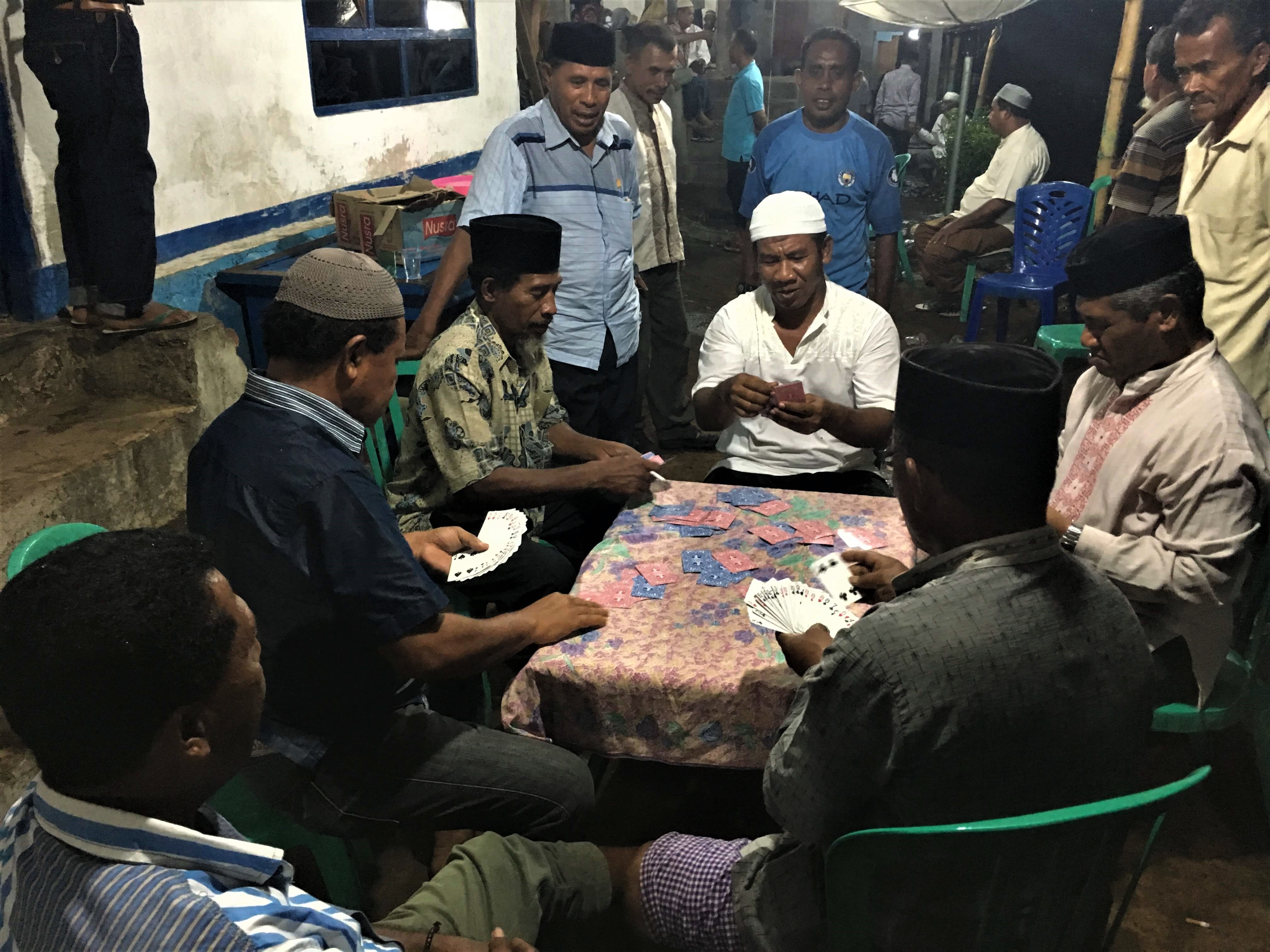
After an incredibly full day, I fell asleep like a brick. There was some real exploration planned for the next day.
The White Sandspit
I woke up early as I had a long trip to make that day. My goal was to reach the isolated village of Meko, where I should find a local fisherman to take me to the Pulau Pasir Putih – Indonesian for White Sand Island. I got the tip from a French couple who I met briefly on Adonara the day before. We knew each other as we stayed in the same place on East Flores as me and got Adonara recommended by the same French expat.
Reaching Meko was not an easy task. I had to continue farther past the White, Red and Chocolate beaches, all around the Ile Boleng volcano. Then I had to leave the main road and ride approximately 20 km outside of any civilization. Off the main road, I drove the scooter on dirt, which was wet, so it was a kind of motocross sometimes. Nevertheless, the views of volcanoes on the way were always amazing.
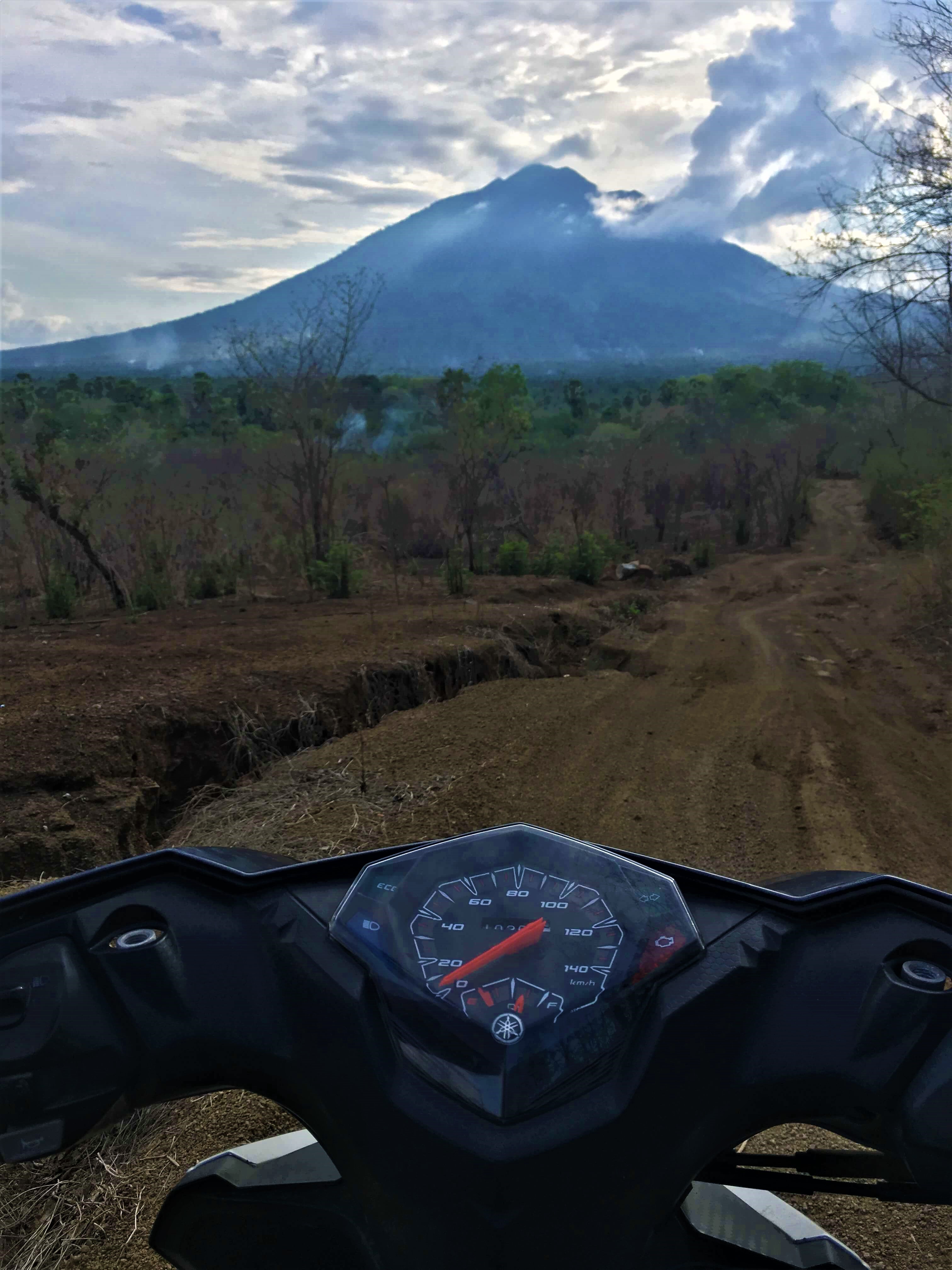
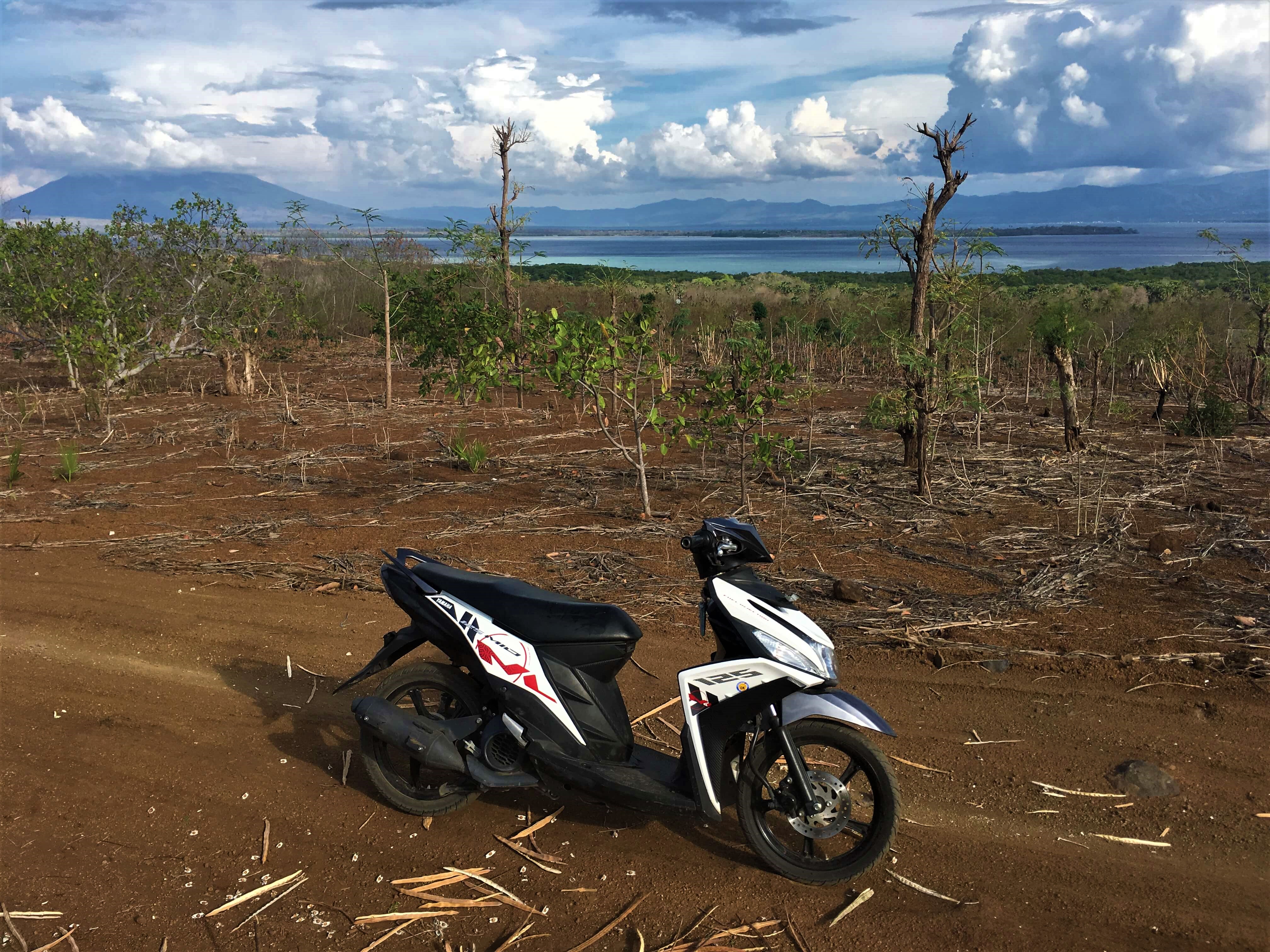
The volcano I saw all the time is Ile Api on the neighboring island of Lembata. The road did not allow for a fast drive so it took me around one hour to finally get to the remote fishing village of Meko. It was a very interesting place. Imagine being on an island untouched by tourism and going to the most remote part of it to find a tiny collection of fishing houses by the coast. Not sure why, but the village reminded me of a place from the Fallout game series, so remote it was.
In Meko, I quickly parked my motorcycle by the mosque and looked for a fisherman to take me to Pasir Putih Island. Besides a few fishermen, there only seemed to be a few children playing on the dirt. After I agreed the price (around 250 thousand rupiah, if I remember correctly) the fisherman took out the long boat and we set off for the nearby sandspit.
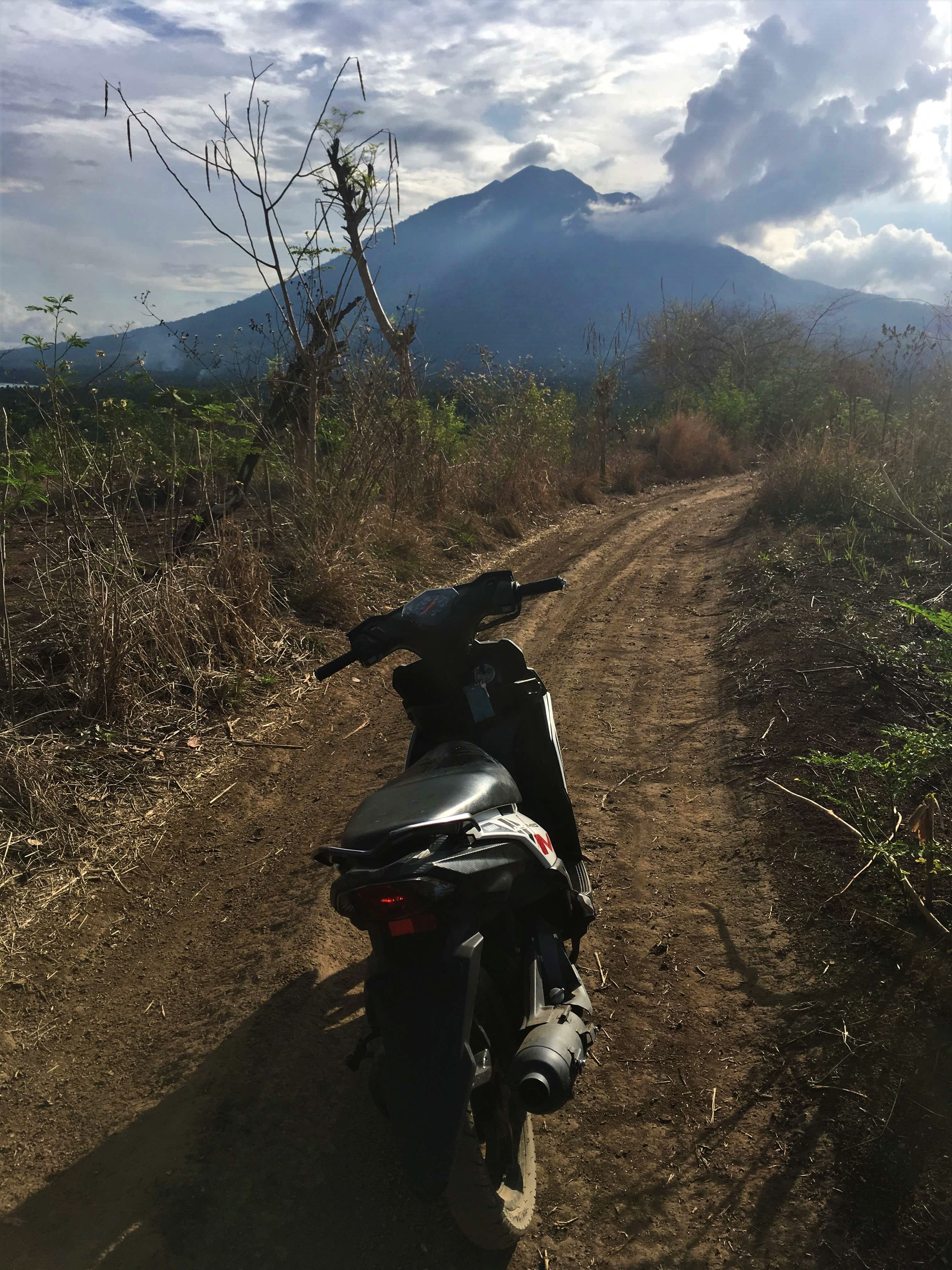
While you are offered trips to a sandspit in many areas in the tropics and the pictures are always nice, this one was in a different league whatsoever. The sandspit was made of the purest white sand I have ever seen. It was completely untouched as me and the fisherman were the only people there. The sea always hides the footprints of any visitors within a few hours, so the only ones I saw were my own. In addition to all this, the water was of perfect color and the majestic Ile Api volcano was dominant on the horizon.
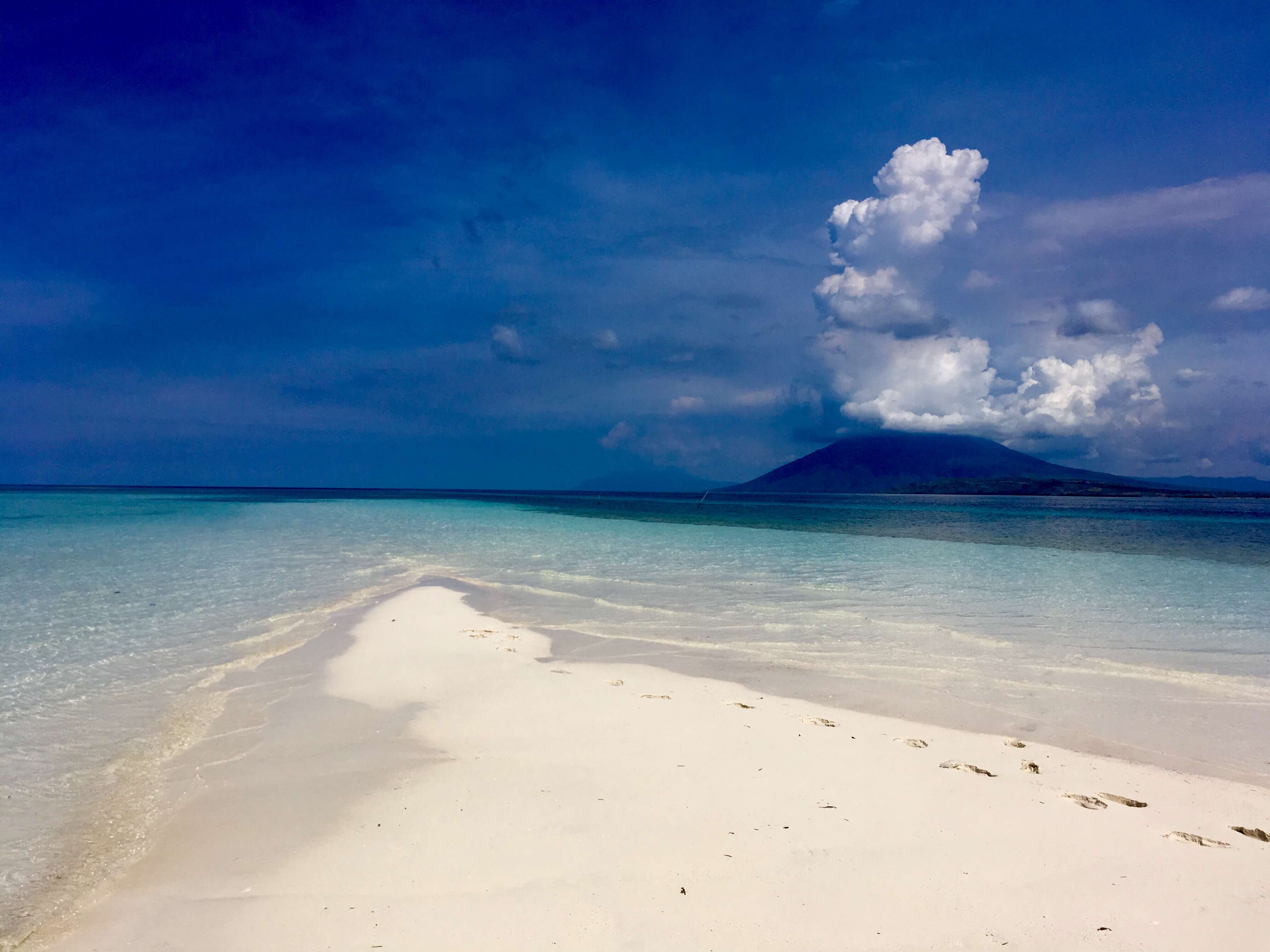
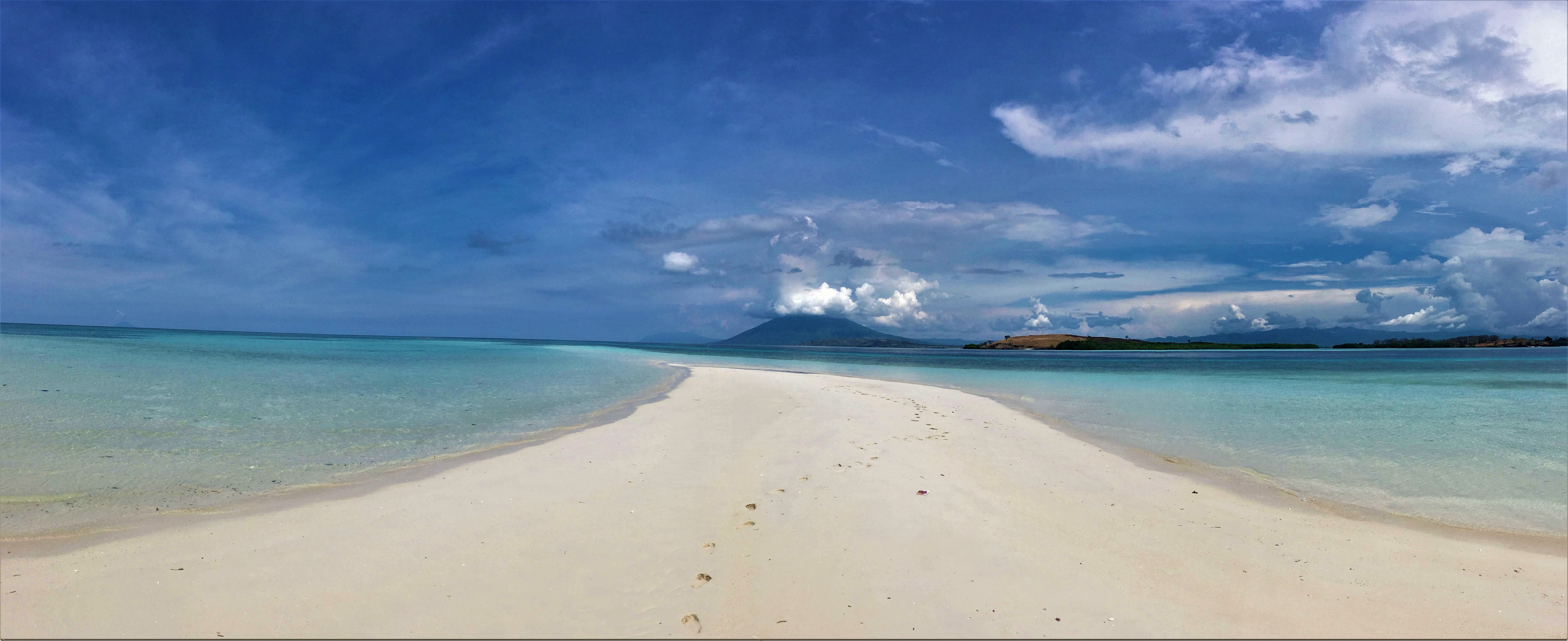
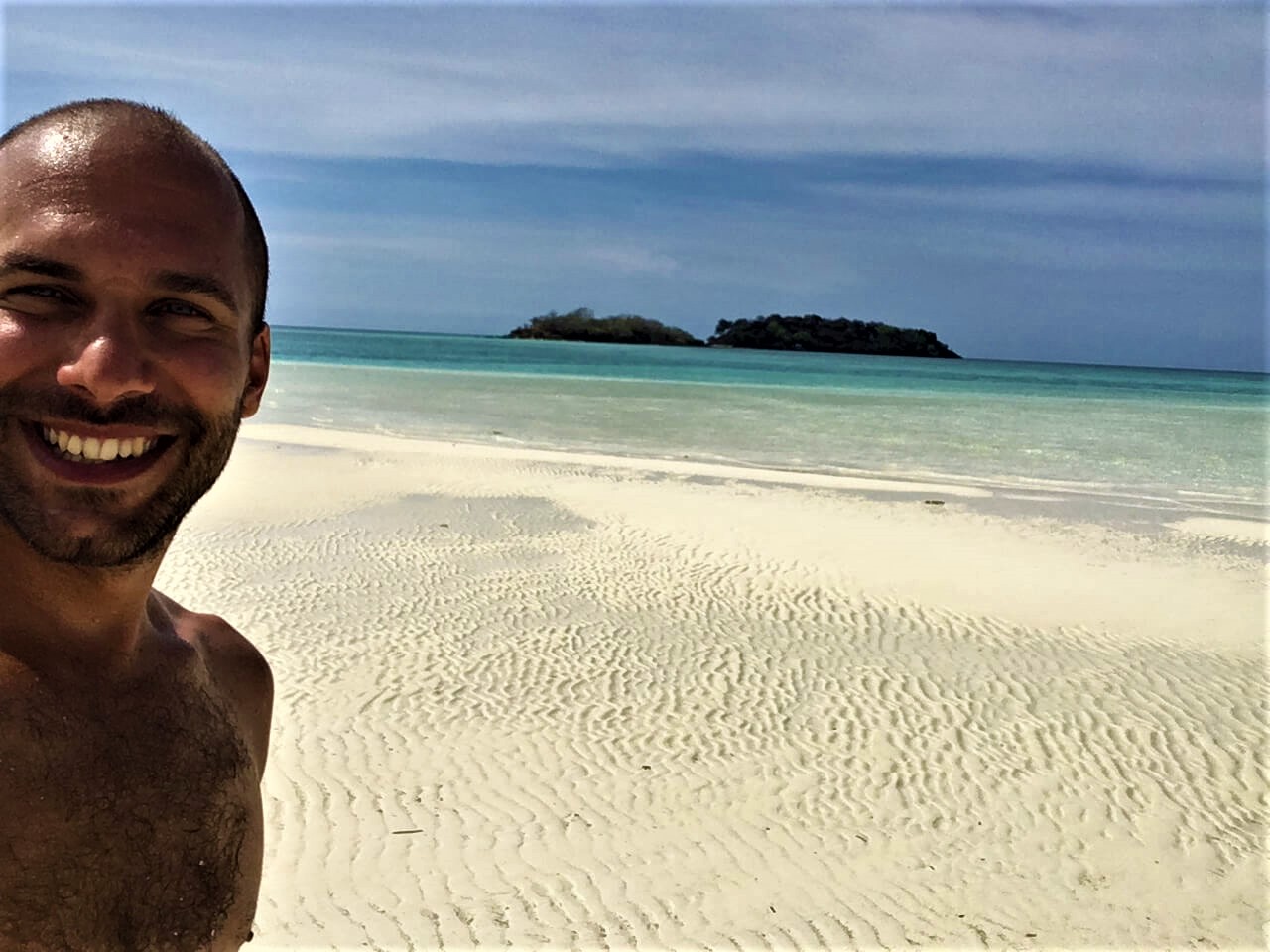

I was taking pictures probably from every angle possible. With the contrasts of the blinding sand, turquoise water, volcanoes and dramatic clouds, this was surely a photographers paradise. But it was a snorkelling paradise too as I found out exploring the coral reefs surrounding the white sandspit. After I snorkelled for quite a while, I returned back to the island and found out I still have close to an hour left of the time we agreed with the fisherman. Therefore, he took me for a small round trip passing by the neighboring tiny islets. From the boat, the contrast between the coral sea, the sand and the volcano is even more pronounced. While I was in the water, another fisherman came to the island for a talk, so you can see his boat on the video.
The fisherman took me to a few off-shore reefs which should be good for snorkelling. The funniest part was when I persuaded the guy to start the boat while I was in water, holding the rail of the boat by one hand and keeping my head underwater with a mask on. This would be completely against any security rules, but I used the situation of being on such a remote place without a package trip to try this ‘motorized snorkelling’.
I totally enjoyed it, as it gave me the chance to see a large part of the local reef and even open sea in a fast way. I was able to see a few turtles and quite a lot of interesting stingrays. The fisherman said there definitely are sharks in these waters but unfortunately I was not able to see any. When my arm could not hold the rail of the boat anymore, we returned to the village of Meko.
On the way back, I took a few pictures of the local children having a great time roaming around on their boat. They look quite happy even without a TV and a playstation, don’t they?
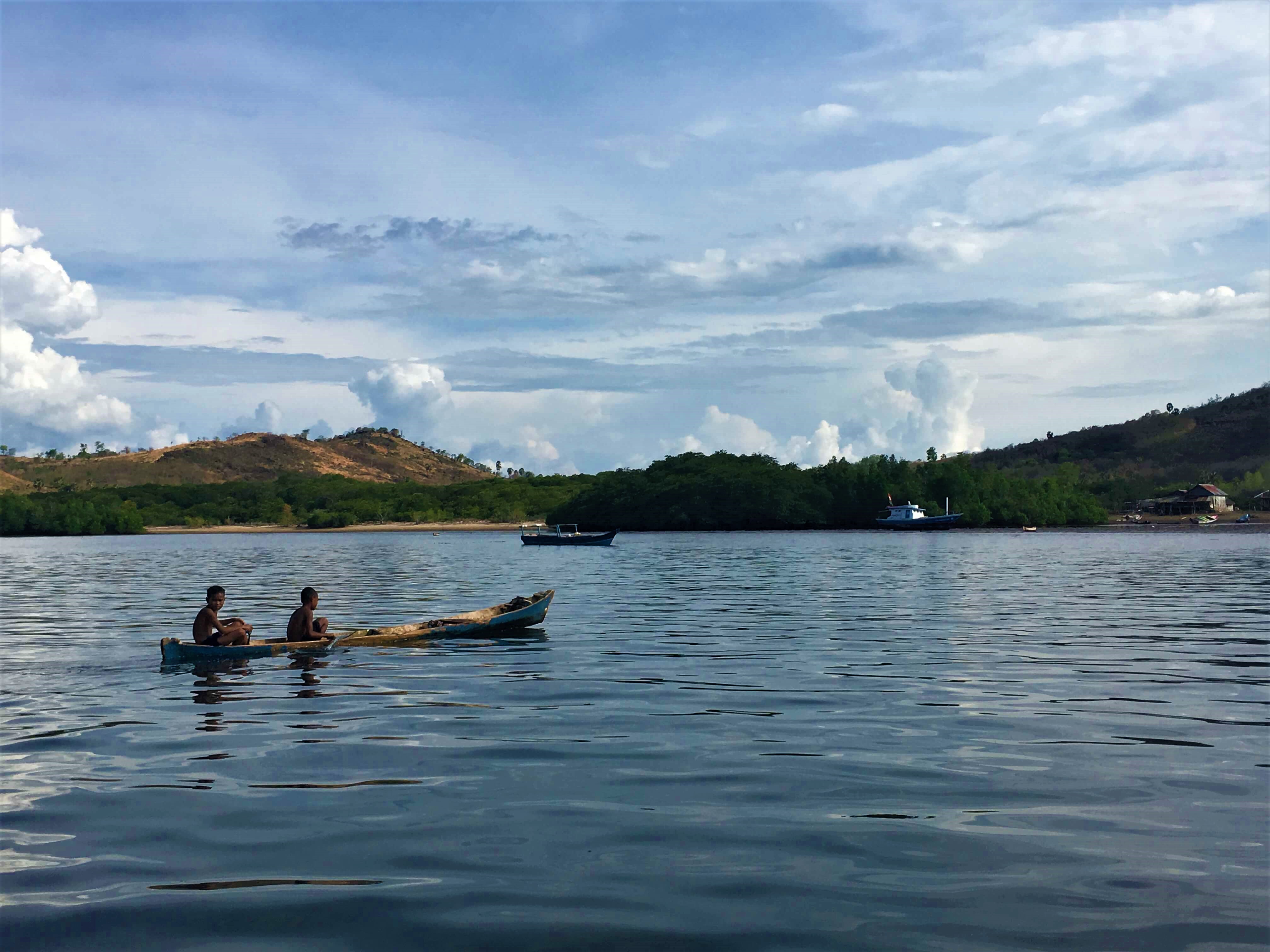
From Meko, I decided to try a different route back to my homestay. This time I did not keep to the coastal road, but crossed the densely forested interior of the island. There was a very good road crossing the forests, so why not explore the forest side of Adonara. This turned out to be a good and a bad idea at the same time.
Bad, because as soon as I climbed to the hilly center of the island, I got caught in thick rain. Thankfully, I had my raincoat so I was able to survive relatively dry. The good thing about the inland road was that it was simply beautiful, lined with deep green jungle on both sides. I also got to take a peek into the villages of the Christians of Adonara, as they keep mostly to the mountains. These looked quite different from the Muslim villages by the sea and there were some very nice little churches.
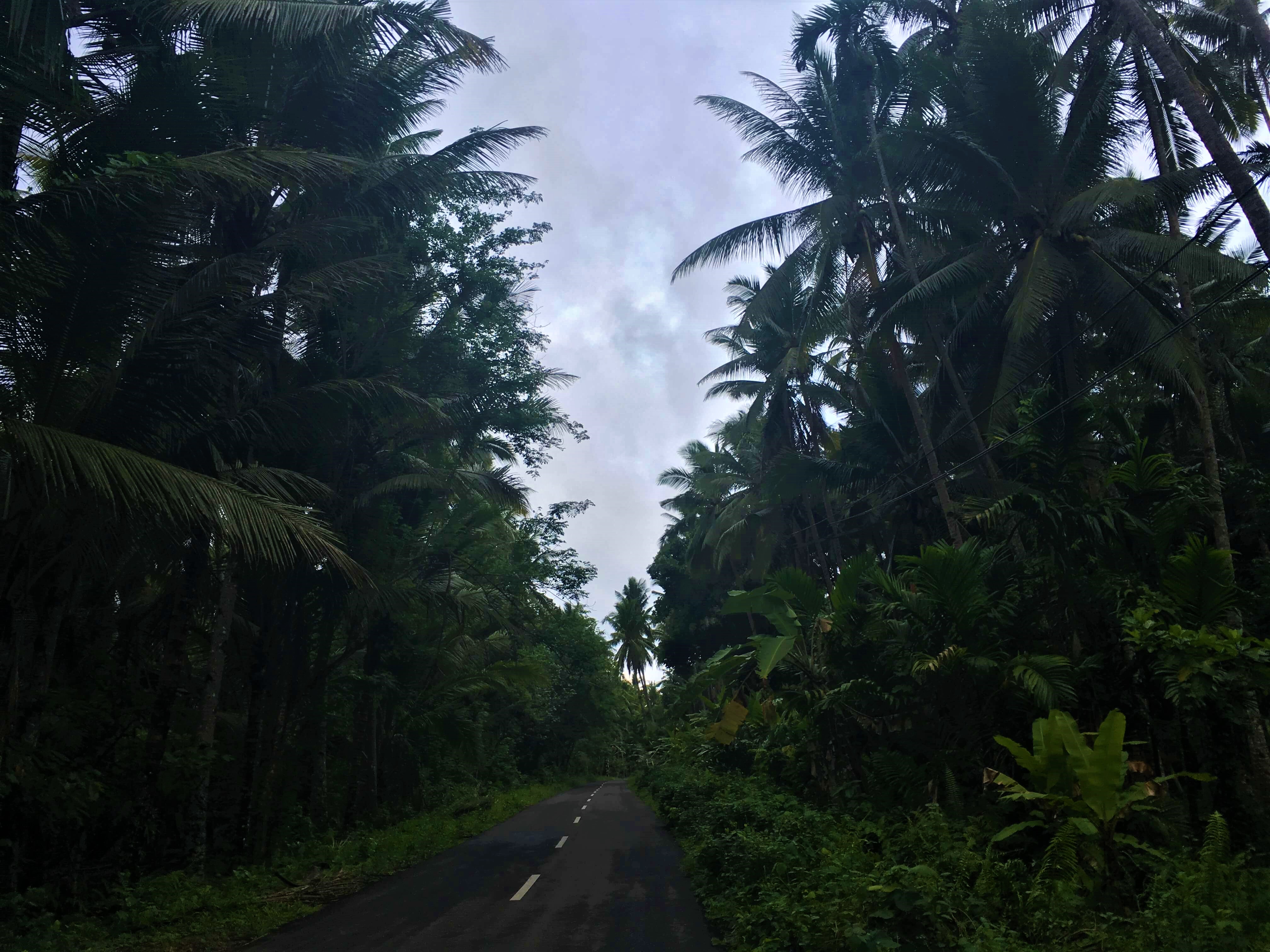
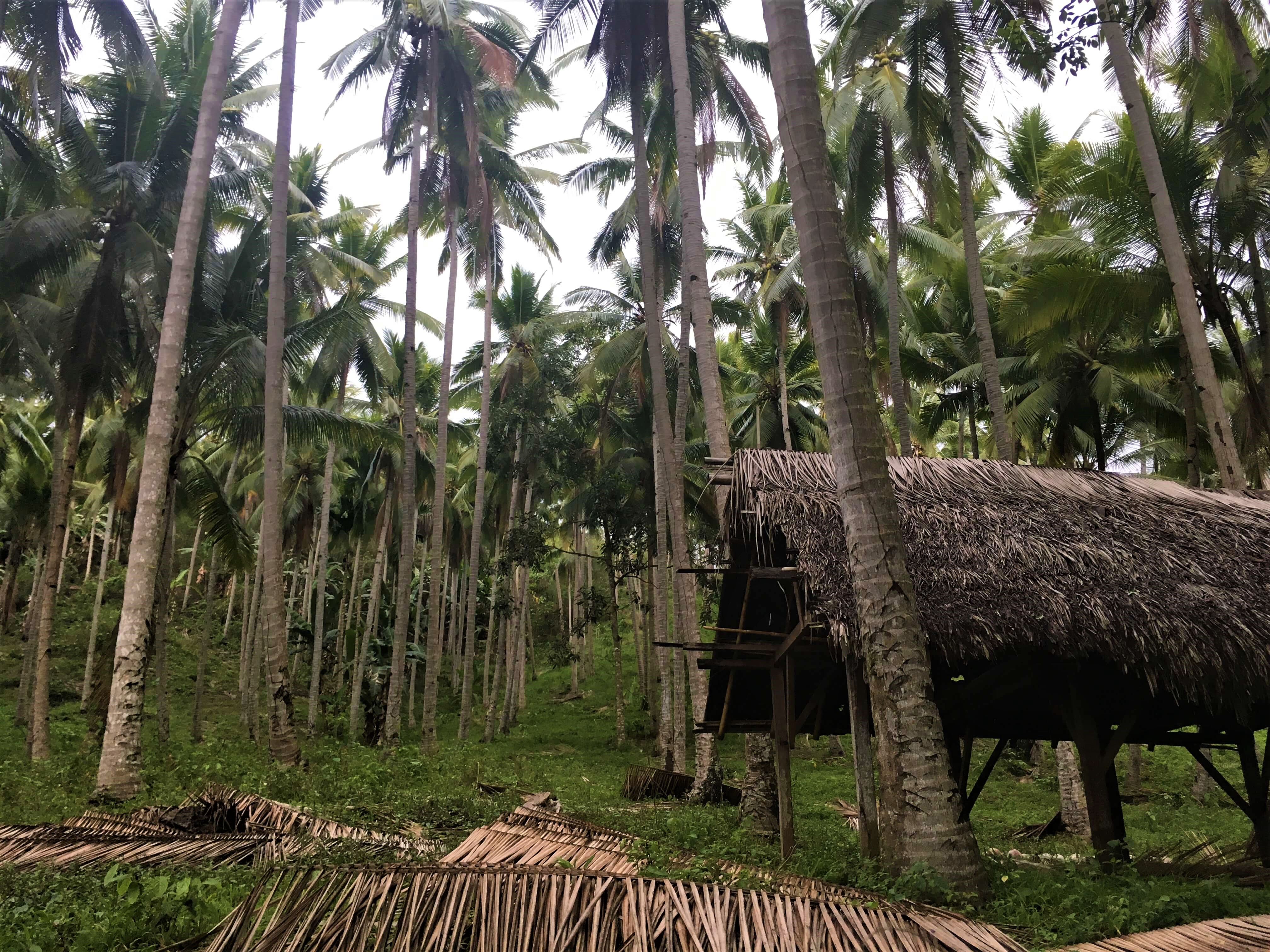
The next day I took a ferry back to Larantuka on Flores, and from there to a homestay near Maumere, the capital city, where I previously left my luggage. On the next day, I had booked a ticket for an epic voyage from Maumere to Makassar on Sulawesi. I really looked forward to cross the whole Flores sea on a huge ocean liner run by Pelni, the Indonesian ferry company. Off to Sulawesi, and from there to the Spice Islands and Papua 🙂